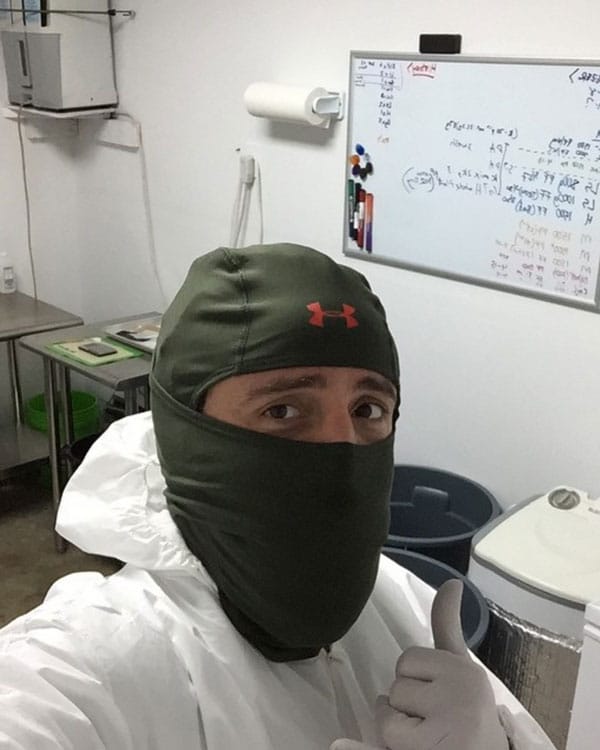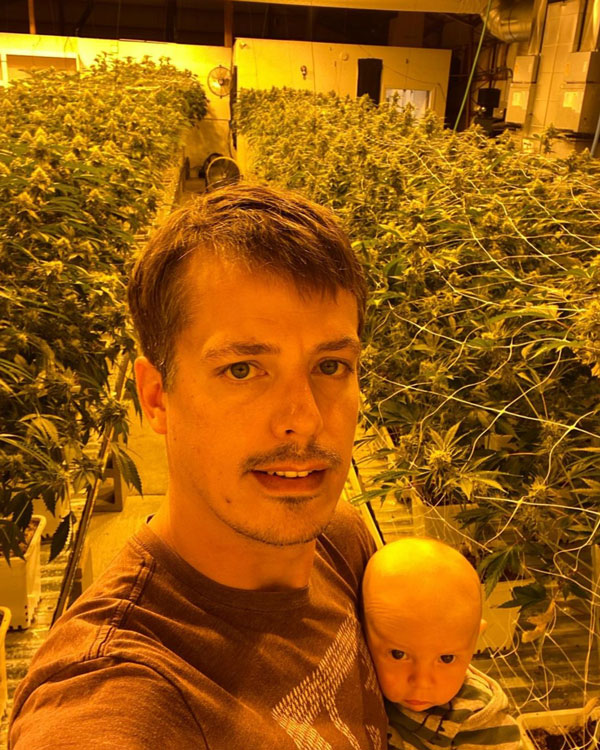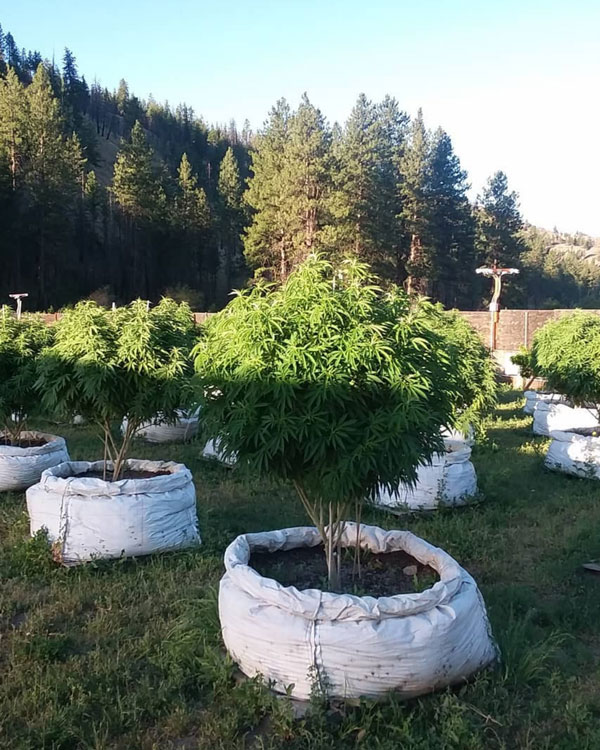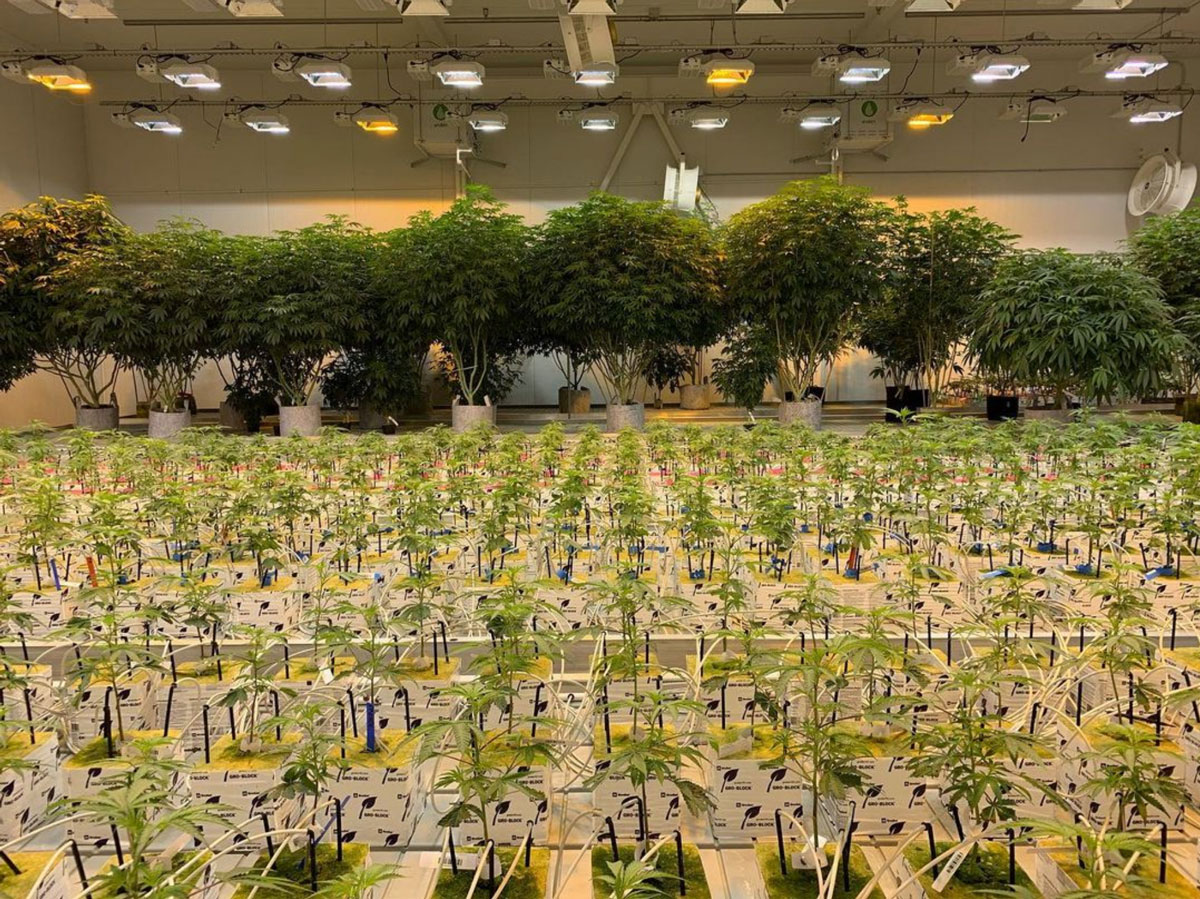What do you appreciate the most about cannabis? Take a second to think about it.
Have your answer? Okay, good.
Before you ask, no, we’re not going to try to guess what your answer was. We don’t have all day, and we’re guessing you don’t either.
But we can probably guess what your answer wasn’t: the years of labor involved in breeding the strains you know and love.
Don’t feel guilty because you didn’t think of that, though. Most cannabis enthusiasts are unaware of the amount of work it takes behind-the-scenes to bring a strain to market.
That’s where we come in. We chatted with three growers about all things genetics to give you an inside look at the story behind the strain.
Here are our most important takeaways from those conversations, in no particular order:
1. Cannabis genetics change as the cannabis space evolves…for better or for worse.
Breeding has always been a collaborative effort amongst cultivators, but until relatively recently, sharing genetics was difficult and risky. Legalization gave growers and breeders more freedom to exchange genetics, ushering in an era of rapid development in the breeding space.
It’s mostly been a change for the better….but, of course, everything has its drawbacks.
“When I started using herbs, there were 2 strains in my area. You used to find certain strains only in certain cities and passing genetics was taboo as was letting anyone know you grew. I feel like hype swept in with medical and access opened up the exchange of genetics. In some cases that’s been great for the genetic pool. In other cases, it’s caused watering down and instability.” -Kaya Paul, PNW Roots
“We started growing back in 2005 with two clones that were gifted to us by way of our buddy Moe Lasses; the OG Kush and God’s Gift. Shortly after that, we kinda developed an obsession with genetics, and started buying up any exciting seeds we could get our hands on. At the time, seed banks were still mostly Holland based, and stateside options were limited, so it was a challenge to find good and stable genetics. The THC Farmer forums were our principal source, so we were heavy on genetics from OG Raskal, Alien Genetics, and Top Dawg. We found so many great phenos…. Fruity Pebble OG, White Dawg, Raskal’s OG, Tres Dawg, EWOK… man, I wish we still had ‘em all. But things come and go, and unfortunately insufficient space has often forced our hand and made us retire so many fire strains. Fast forward to today, we’re still always on the hunt for that new shit. We’re not necessarily trying to hop on the hype train, more just trying to find phenotypes that we’re stoked on, something that we wanna roll up ourselves, something that checks all the boxes (appearance, aroma, potency, vigor, stability/health).” -Alex Prindle, Fire Bros

An indoor cultivation room at the Pacific NW Roots facility in Mason County, WA.
2. But some strains are timeless.
A winning strain is a winning strain, no matter when it made an appearance on the genetics timeline. Just because something is newer doesn’t make it better.
With the genetics space changing expeditiously, hanging on to the classics is more important than ever before.
“….While we’ve run through literally thousands of seeds since ’05, and our stable has changed many times over, we still have that God’s Gift from day 1.” -Alex Prindle, Fire Bros

Fire Bros owner Alex Prindle with turkey bags of finished product.
3. And even though the field of cannabis genetics changes day-by-day, breeding is a long, involved process.
Breeding cannabis isn’t as simple as crossing a male plant and a female plant. It’s actually a complex process similar to animal husbandry: breeding undesirable traits out and desirable traits in over the course of multiple generations to ensure any recessive genes don’t pop up in future offspring. It can take years of breeding and testing before a strain is ready for market.
“ I started with flowering a small flower room with 150 male plants of my favorite strains all the way through their cycle. I found a Sunset Sherbet x Dosidos ( Sunset Dosi ) X Zkittles x Dosidos ( Moonbow ) that was so much frostier and stinker than all the rest with dense pollen sac clusters that were loaded with pollen. This was the best male plant that I have personally ever seen in the last 20 years I have grown. I took this male and bred it to all the genetics I have and ended up with a bunch of awesome seeds. I ended up popping 800 seeds of 5 of my favorite crosses. It takes me about 2 -3 years to pheno hunt and do 3 rounds of testing for potency, terps and stability. I am just now finishing up my last bit of pheno testing and am releasing the winners I have been working on for the last 3 years. This is personally my favorite part of growing. You get to see all the different phenotypes, and bring something new to the table for everyone to enjoy.” -Andrew Cole, Kindness Cannabis

Happy plants in the cultivation room at the Kindness Cannabis farm in Colville, WA.
4. Sometimes, though, strains breed themselves.
We all make mistakes, whether it be forgetting your keys, or leaving your car lights on…. or leaving a male plant in the grow room.
Culling male plants is an important part of the cultivation process. If you don’t, they’ll pollinate the female plants, leaving your harvest seedy and underdeveloped. Normally, leaving a male plant among the females is a detrimental error.
But, occasionally, it results in a killer new strain.
“Pineapple Pancakes was an accidental pollination of the Pineapple Haze from our Sour Pebbles. There’s always a silver lining!” -Alex Prindle, Fire Bros
“I worked at a 502 and while I was on vacation the guy I had helping in the carden missed culling a male of “Codename K” in the testing room and it pollinated the entire room. Some really nice crosses and plants have come from that. Might have cost me my job, too.” -Kaya Paul, PNW Roots

Pacific NW Roots founder Kaya Paul in the cold room at the Pacifc NW Roots facility.
5. Pheno-hunting is a constant undertaking.
You know how different siblings can be from one another, even though they have the same parents?
Well, cannabis is the same way.
Even though seeds come from the same plant, there are always variations in the finished product. That’s where pheno-hunting comes in: cultivators grow plants from seed to full maturity, pick the best of the batch, and clone it until they have a full crop.
And as you can imagine, their work in that department is never really done.
“(Pheno-hunting is) a small percentage of the daily work load, however, the whole process takes quite a bit of time. First you’ve gotta germinate the seeds which can take up to 5-6 days til the seedling pops out of the medium. Then it’s gotta be grown for let’s say 45 days before it’s ready to be cloned. Those clones take about 14 days to be rooted and then transplanted. Another 14 before they can be flowered. Flowering takes about 62 days. Remember to cull any males during the flowering phase. They need to be monitored very closely for male flowers. If you miss any, that could pollinate and seed your entire room, so be very careful!!! Meanwhile you’re still tending to the seed stock in your veg room remember? All those plants are there, waiting to determine who the winner is. Once harvested, drying/curing/trimming adds another 35 days. That’s almost 6 months! And now you’ve gotta take the potential winners, and run them again to really confirm they merit a spot in the stable and can get into production. So yeah. It’s not quick and it’s not easy.“ -Alex Prindle, Fire Bros
“I am always pheno hunting to keep things new and fresh so you could say I spend as much time pheno hunting and testing as I do everything else, 365 days a year. I always have to be on the hunt since it takes so long to get a winner into production.” -Andrew Cole, Kindness Cannabis
“(I’m pheno-hunting) all the time… we are constantly running testers. It’s really more a matter of how much canopy can we allocate to the hunts, and our needs or curiosity.” -Kaya Paul, PNW Roots

Mature plants sitting pretty in the flower room at the Seattle Fire Bros facility.
6. Landrace sativa strains and indoor commercial cultivation don’t mix.
In the shop, we get customer requests for “pure sativas” fairly often. And while we hate to disappoint, we always have to tell these folks that they’re out of luck. There are plenty of strains whose effects feel “pure sativa”, but genetically speaking, they aren’t. 100% sativa strains, AKA landrace sativa strains, are virtually nonexistent in the rec market.
But why is that, exactly?
Ask any cultivator, no matter their practices or philosophy, and they’ll tell you: landrace sativas just aren’t equipped for large-scale indoor production.
”“(We’ll never grow) landrace sativas. They grow way too tall, and take way too long to mature. Just doesn’t work with our program. Sorry. Though I should say we’ve got a bunch of new sativas on the way!” -Alex Prindle, Fire Bros
“I stay away from full Sativas because they are typically slow in veg, grow too tall for my setup, and typically take 10-12 weeks to finish flowering, when indica and sativa hybrids typically finish in 8-9 weeks. I also stay away from handed out heavily used genetics that are flooding the market, as I like to grow unique flower that not everyone else is growing!” -Andrew Cole, Kindness Cannabis
“You’ll never see (me growing) poly-hype bred trash or true landrace, but for very different reasons.” -Kaya Paul, PNW Roots

Kindness Cannabis founder Andrew Cole and his son pose for a classic grow room selfie at the family farm in Colville, WA.
7. Strains can go extinct.
Have you ever found a strain you loved, only to not be able to find it again? It’s possible that strain just didn’t work with the cultivator’s program and they cut it….but it could also be because the “mother plant” (the one all other clones originate from) died.
Unfortunately, if it’s the latter, you probably won’t ever smoke that strain again- at least, not the way you remember it. They can cross the same two plants and try to recreate it, but the result would never be genetically identical to the plant they lost.
Luckily, these occurrences are few and far between for most cultivators. And, because of the large network of growers who frequently trade genetics, getting strains back isn’t as hard as it used to be. If a mother plant dies at one grow, it’s possible someone else somewhere has a clone, and those genetics can be recouped.
“Fortunately our garden crew doesn’t fuck around and accidentally kill plants…..HOWEVER, we were restarting our Sally mom recently, so we took clones off the mother (for restarts), killed the mother, and then accidentally sold those clones to a clone buyer. OOOPS. We realized our mistake the same day, but by that time the buyer had already introduced those clones to his garden, where he was fighting a variety of pests. We NEVER take in outside clones because of the potential for bringing in pests, so unfortunately we just had to consider it a loss. That being said, we have a Sally cross that should be launching soon. She’s arguably better than the original.” -Alex Prindle, Fire Bros
“I have lost many strains in my experience of growing. It usually has to do with the little space I have to work with and keeping so many genetics around that I am always re-cloning to keep the ones small that I am not using for production at the time.. I always keep seed stock so if I lose anything I can pop more seeds and find something really close or better than the original.” -Andrew Cole, Kindness Cannabis
“I’ve lost (genetics), and in some cases was blessed to get them back from good friends. That’s why you don’t hoard things.” -Kaya Paul, PNW Roots

Pacific NW Roots utilizes both indoor cultivation and outdoor cultivation, shown here. As you can see, outdoor plants take on a different appearance than their indoor counterparts.
8. Even growers have their favorites.
With so many different genetics passing through their hands over the years, you’d think it’d be hard to pick just one strain as a highlight.
But that’s where you’d be wrong! The folks behind the bud have their faves, just like everyone else.
“If I could pick one strain that represents me it would be the Tropical Sherbet. I chose the Trop Sherb because it is the first seed line that I have created , worked and hunted through new crosses that nobody has ever worked. This project represents everything I have ever learned in the last 20 years of growing.” – Andrew Cole, Kindness Cannabis
“(My favorite is) Kaya’s Koffee, of course! It’s a hardy plant with strong effects and complex terps.”– Kaya Paul, PNW Roots
“Personally I’ve gotta go with the God’s Gift (as my favorite), cause of my history with it, but also because it’s kinda the perfect smoke for my tastes. Great fucking bag appeal, super flavorful and fruity, and not so potent that you can’t smoke a lot of it (I really enjoy the act of smoking, it’s not just the getting high part). Our Garden Director Santi says his current favorite is the I-90. His reasoning is similar to mine, though he’s got beastly tolerance, so even though the I-90 is strong af, he’s still putting down a couple few L’s a day and handling his business 100%.”– Alex Prindle, Fire Bros

A menagerie of farm animals also call the Kindness Cannabis farm home. Here, Andrew Cole’s goats chow down at the feeding trough.
Did you learn something new? We hope so!
Big thanks to Kaya, Alex, and Andrew for all their insight!
Now, go forth and partake with your newfound appreciation for the work that was put into making your favorite strain your favorite strain.



